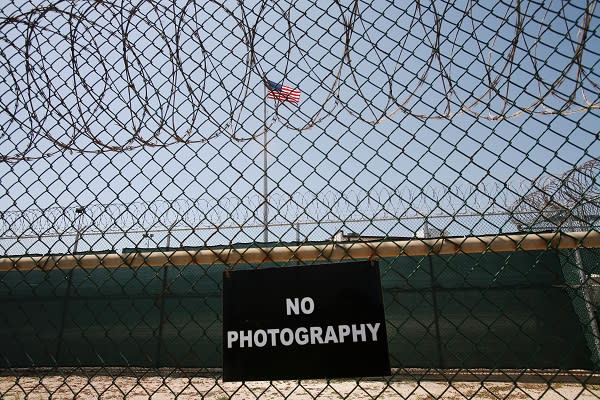 The Upshot
The UpshotMedia dos and don’ts for covering Guantanamo Bay

The media's gaze turns again to Guantanamo Bay this week, with the trial of its youngest detainee, Omar Khadr. The Canadian-born suspect, now 23, was captured on an Afghanistan battlefield in 2002.
Media access has always been a contentious (and confusing) issue at Guantanamo Bay. For instance, the Defense Department banned four reporters during Khadr's pretrial hearing in May after they had revealed the name of a witness. The witness's name had already been published in previous reports.
Reporters frequently gripe that the military's rules seem rife with contradictions and can change day to day. With the Khadr trial getting underway, New York Times reporter Jeremy Peters looks at what reporters can and can't do — at least for the moment — when covering Guantanamo Bay.
Here are some of the do's and don'ts for reporters to keep in mind:
Do photograph reading materials — like Harry Potter books — located in the detainee library.
Don't photograph the librarian's filing code on the books.
Do look at pictures that detainees have drawn of sailboats and pieces of fruit.
Don't photograph the same pictures because, the Times says, "the military is concerned that detainees might have hidden messages in them."
Do feel free to read about detainees whose identities have been revealed, and whose names are part of the public record through legal proceedings.
Don't speak to those detainees or photograph them while in Guantanamo Bay, out of concern for revealing their identities.
Do take pictures of "No Photography" signs (like the AP's shot above).
Don't forget that all photographs will be reviewed by the military.
Do take photos of occupied guard towers.
Don't take photos of unoccupied guard towers. Peters writes that the military is concerned about revealing to its enemies which towers aren't manned (even though the guards routinely rotate between posts).
Do take photos of kitchen items such as Kellogg's cereal.
Don't ask what kind of hot sauce detainees are given. It's not exactly clear why one brand name is acceptable but not another.
Navy Cmdr. Bradley Fagan acknowledged to Peters that the military has had problems with media complaining about transparency. Indeed, a note on the dry-erase board in his office confirmed tensions between the military and press: "Top story this week: Rules inconvenience reporters."

